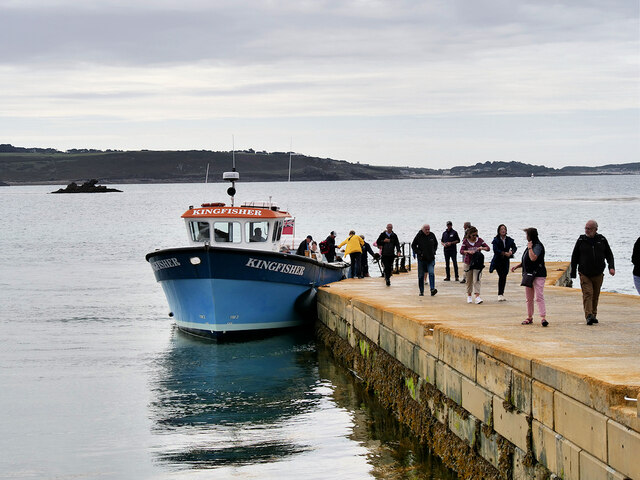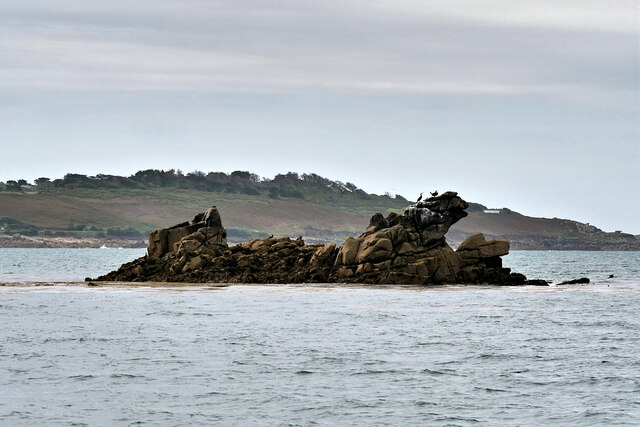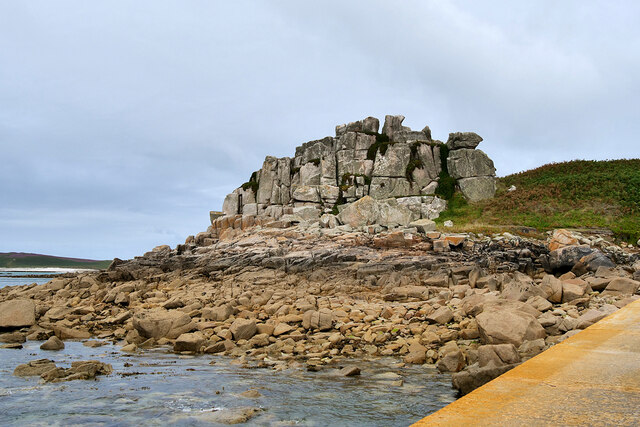Skirt Island
Coastal Feature, Headland, Point in Cornwall
England
Skirt Island

Skirt Island is a prominent coastal feature located off the southwestern coast of Cornwall, England. Situated near the town of Penzance, it is a headland that juts out into the Celtic Sea, forming a distinctive point along the coastline. Skirt Island is known for its rugged and dramatic landscape, characterized by towering cliffs, rocky outcrops, and breathtaking views of the surrounding ocean.
The island itself is relatively small, with a total area of approximately 20 acres. It is composed mainly of granite, a common geological feature in the region. Skirt Island is accessible by boat, and visitors can explore its diverse flora and fauna, including various seabirds and marine life that inhabit the surrounding waters. The island's cliffs provide nesting sites for species such as puffins, guillemots, and razorbills.
Skirt Island offers visitors a unique opportunity to experience the natural beauty of Cornwall's coastline. Its prominent position along the headland provides panoramic views of the sea and the nearby mainland. The island's rocky terrain also makes it a popular spot for outdoor activities such as rock climbing and hiking.
In addition to its natural attractions, Skirt Island also holds historical significance. It is believed to have been inhabited in the past, as evidenced by the presence of ancient ruins and artifacts. These remnants offer a glimpse into the island's past and its connection to the local communities.
Overall, Skirt Island is a captivating coastal feature that combines stunning natural scenery with a rich historical heritage. Its rugged cliffs, diverse wildlife, and panoramic views make it a must-visit destination for nature enthusiasts and history buffs alike.
If you have any feedback on the listing, please let us know in the comments section below.
Skirt Island Images
Images are sourced within 2km of 49.945118/-6.3197951 or Grid Reference SV9013. Thanks to Geograph Open Source API. All images are credited.













Skirt Island is located at Grid Ref: SV9013 (Lat: 49.945118, Lng: -6.3197951)
Division: Isles of Scilly
Unitary Authority: Isles of Scilly
Police Authority: Devon and Cornwall
What 3 Words
///massaging.opponent.melt. Near Tresco, Isles of Scilly
Nearby Locations
Related Wikis
Tresco Heliport
Tresco Heliport (ICAO: EGHT) is a heliport located on the island of Tresco, in the Isles of Scilly off the southwest coast of England, UK. The heliport...
Tresco Priory
Tresco Priory is a former monastic settlement on Tresco, Isles of Scilly founded in 946 AD. It was re-founded as the Priory of St Nicholas by monks from...
Tresco Abbey Gardens
Tresco Abbey Gardens are located on the island of Tresco in the Isles of Scilly, United Kingdom. The 17 acre gardens were established by the nineteenth...
Oliver's Battery, Tresco
Oliver's Battery is a ruined artillery battery on the island of Tresco in the Isles of Scilly off of Cornwall, England. It was built by the Parliamentarian...
Nearby Amenities
Located within 500m of 49.945118,-6.3197951Have you been to Skirt Island?
Leave your review of Skirt Island below (or comments, questions and feedback).






